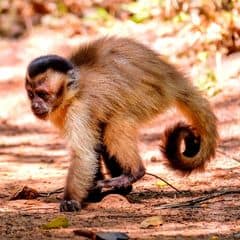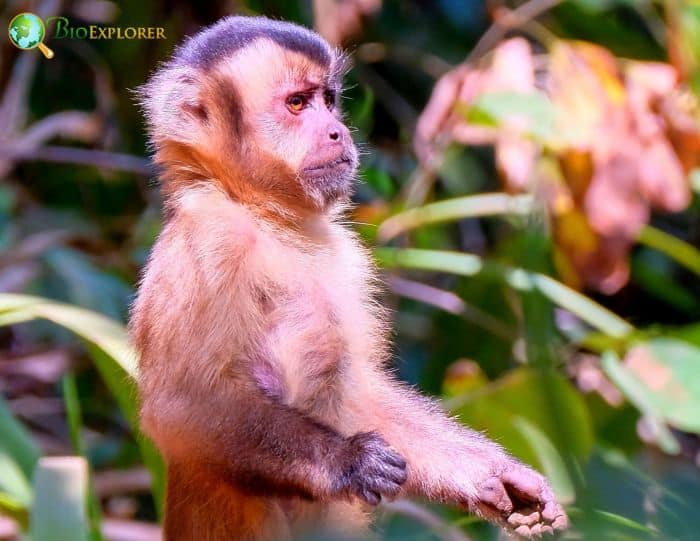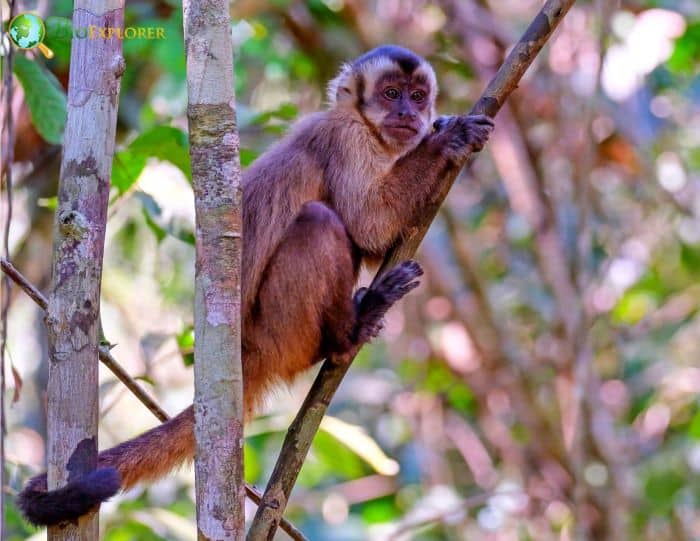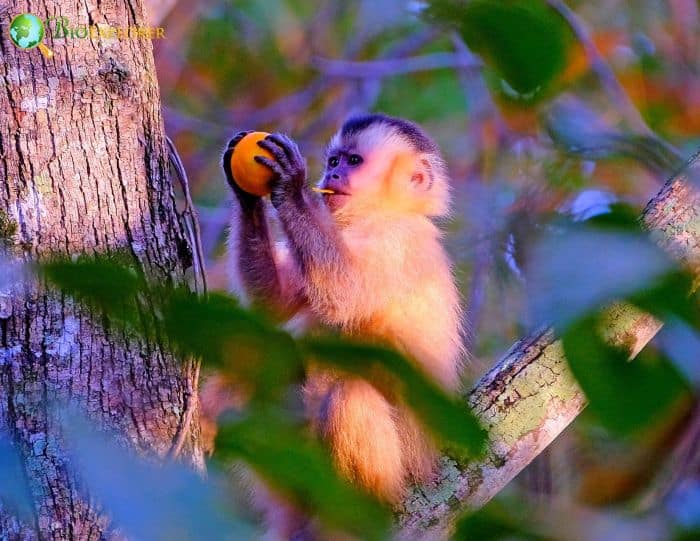
| Animalia | Primates | Cebidae | Sapajus | Sapajus cay |


- Common Names: Hooded Capuchin, Azara’s capuchin
- Taxonomy Classification Year: 1815
- Monkey Size: 37 to 37 cm (14.6 to 14.6 in)
- Skin Color(s): Light to dark brown
- Habitat: Forests
- Diet: Omnivorous
- Native Countries: Paraguay, Bolivia, Argentina, Brazil
Hooded Capuchin Distribution
Hooded Capuchin Characteristics

The ‘Azaras capuchin[1] or hooded capuchin (Sapajus cay) is a robust capuchin species. It is found in northern Argentina, southeastern Bolivia, eastern Paraguay, and Brazil.

- Azara’s capuchins have few physical characteristics that differentiate them from other tufted capuchins.
- Like other tufted capuchins, they have thick, muscular tails. They have light brown to dark brown fur on the body, with darker black fur on the head, arms, legs, and tail.
- When they reach sexual maturity, they have dark spots on their heads and sideburns on their faces.
- However, the features that most differentiate them include orange-colored fur on the neck and yellow-colored fur on the dorsal side.
- Males and females are usually similar in size, around 37 cm (14.6 in), but exhibit strong sexual dimorphism in their weight, with males weighing about 3.5 kg and females about 2.1 kg.
Hooded Capuchin Facts

- Its habitat consists of humid, subtropical, semi-deciduous, gallery forests and forests in the Pantanales.
- Sapajus cay was previously considered a subspecies of the black-striped capuchin, named Cebus libidinosus paraguayanus according to Groves (2005), but Silva Jr. (2001) considered it a distinct species.
- Hooded capuchins often live in very social groups of 6 to 20 individuals.
- These capuchins are considered frugivores-insectivores, which means that their diet consists mainly of a variety of seeds, fruits, frogs, arthropods, small mammals, etc.
- Known for its use of tools, Azaras’s Capuchin has been shown to use tools in various situations, from using stones to crack nuts to using sticks to dig.

Suggested Reading: Kinds of Monkeys
Cite This Page
APA7MLA8Chicago
BioExplorer.net. (2025, April 14). Hooded Capuchin. Bio Explorer. https://www.bioexplorer.net/animals/mammals/monkeys/hooded-capuchin/.
BioExplorer.net. "Hooded Capuchin" Bio Explorer, 14 April 2025, https://www.bioexplorer.net/animals/mammals/monkeys/hooded-capuchin/.
BioExplorer.net. "Hooded Capuchin" Bio Explorer, April 14 2025. https://www.bioexplorer.net/animals/mammals/monkeys/hooded-capuchin/.










